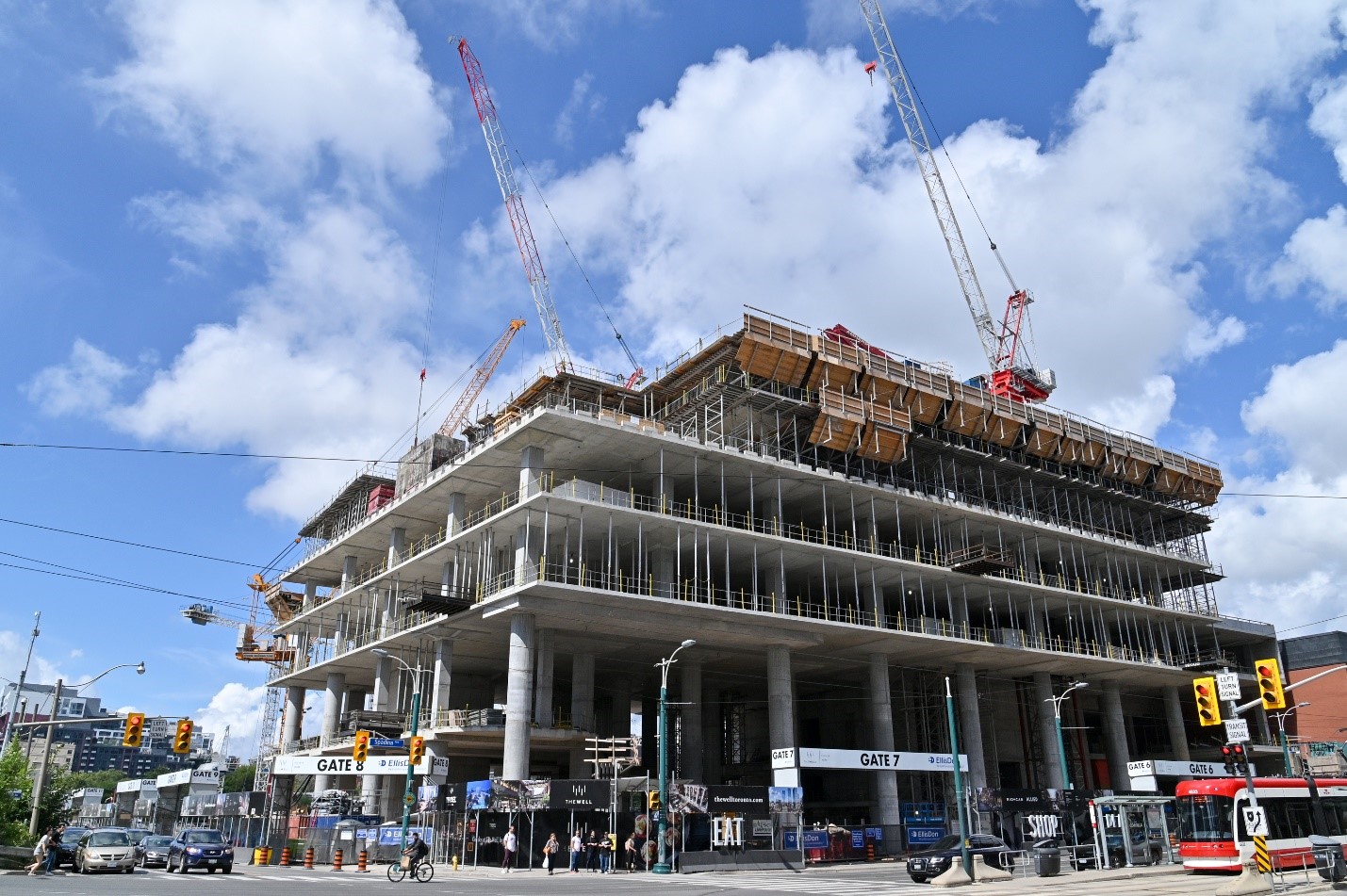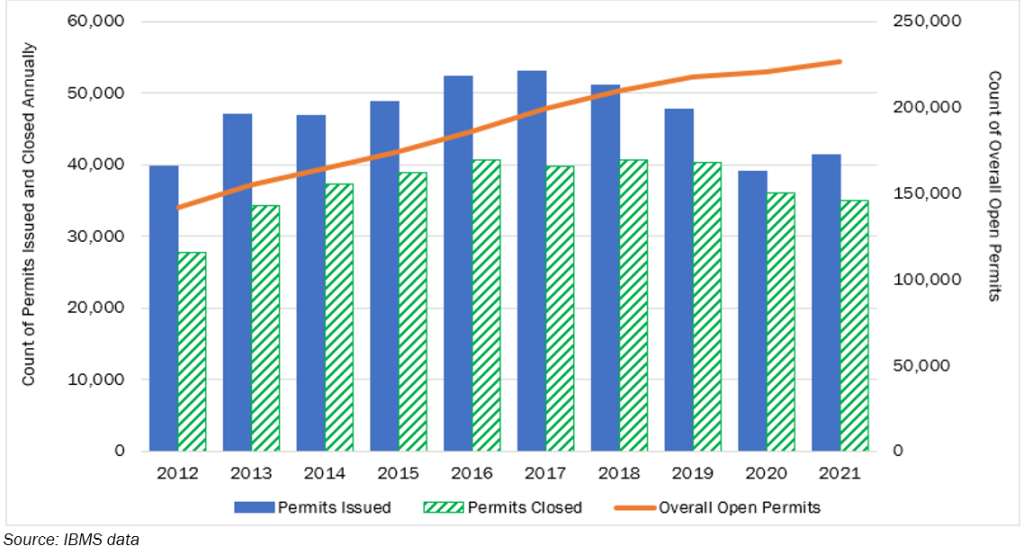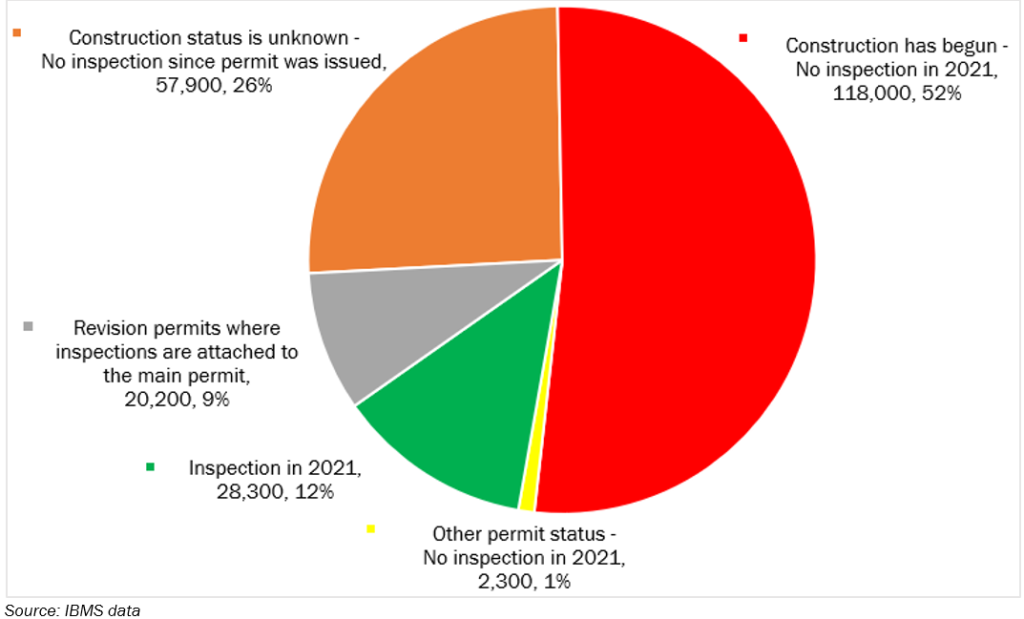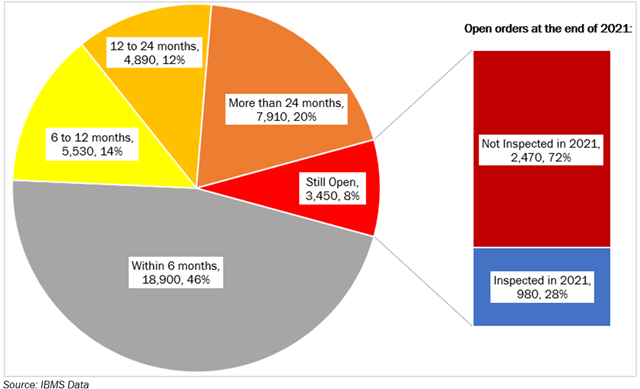
Why This Audit Matters
Protecting public health and safety and limiting the probability of certain types of damage or degradation as a result of the design or construction of a building are key objectives of the Ontario Building Code.
This is why the Chief Building Official (CBO) and building inspectors role in enforcing the Building Code Act, 1992 (Act) and the Ontario Building Code (Building Code or Code) is important.
The implementation of the 20 recommendations contained in this report will improve Toronto Building’s policies and processes for inspecting construction and issuing orders to enforce compliance with legislated requirements.
Background
The CBO’s role includes establishing operational policies for the enforcement of the Act and the Code and coordinating and overseeing their enforcement.
A building permit is required when constructing, demolishing or materially altering a “building” as defined in the Act, or for changes of use that result in an increase in hazard as defined in the Building Code.
Inspections are required at specific stages of construction set out in the Building Code. It is the responsibility of the permit holder to notify the CBO when the construction is ready to be inspected. After the notice is received, an inspector is required to carry out the inspection within legislated time frames.
What We Found
Through this audit, we identified opportunities for the CBO to:
A. Strengthen Operational Policies and Processes
- We identified examples where construction proceeded without the prescribed inspection because permit holders did not notify Toronto Building that work was ready to be inspected.
- Deficiencies identified during inspections were not consistently documented, communicated and followed up by inspectors in accordance with the Division’s operational policies and procedures.
- Inspectors were not always issuing orders to enforce compliance. Also, follow-up action on open orders was not consistently carried out to confirm compliance was achieved.
- The Division can improve the data it uses to determine compliance with legislated time frames for inspections.
B. Reinforce Quality and Consistency of Inspections
- Record-keeping needs improvement. Inspectors did not always follow documentation requirements set out in the Division’s policies or document the inspection steps they performed during their inspection of a building element/component of construction.
- Policies can be more clear about what must be done and documented when inspectors rely on general reviews and/or other requested reports.
- Internal quality assurance processes, including on-site supervision, monitoring, and inspection audits, need strengthening.
C. Modernize Systems to Support Inspections
- Current information system (IBMS) is outdated and presents many challenges to inspection staff because of its limited functionalities and the way it captures data.
- Toronto Building’s Program Review identified the need to accelerate modernization of the information system as one of the critical factors in successfully achieving business transformation.
Toronto Building has undertaken a Program Review to identify ways to address systemic challenges and known concerns more effectively.
By The Numbers
In 2021, approximately:
- 40,000 new building permits issued
- 155,000 inspections conducted on 62,000 building permits, complaints and orders (excluding activities related to sign permits)
At the end of 2021, approximately:
- 35 vacant frontline inspector positions
- 226,000 open building permits
Year-over-year Trending of Issued, Closed, and Cumulative Open Permits (2012-2021)

At the end of 2021, approximately:
- 178,200 open building permits had not received an inspection in 2021
- 118,000 of these open permits had started construction
- 57,900 of these open permits have not an inspection since the permit was issued and the construction status is unknown
Inspection Status of Open Permits at the End of 2021

At the end of 2021, approximately:
- 40,700 orders issued between 1989 and 2021
- 3,450 orders remain open including 12 unsafe orders issued prior to 2012
- 2,470 open orders had no inspection or significant follow-up action in 2021
For building permits issued between 2016 and 2021, approximately:
- 91,600 deficiencies tracked in the designated function in information system
- 70,600 were closed by the end of 2021
- 8,100 open deficiencies with an order issued
- 12,900 open deficiencies with no order issued
Time Taken to Close Orders Issued Between 1989 and 2021

How Recommendations Will Benefit the City
The findings and recommendations in this report identify areas for the Chief Building Official to better support inspectors’ ability to:
- Operate more efficiently and effectively when inspecting construction, and when issuing or following-up on orders
- Demonstrate that inspections are being completed according to the Division’s operational policies and procedures
- Confirm that inspections are meeting legislated time frames for carrying out inspections